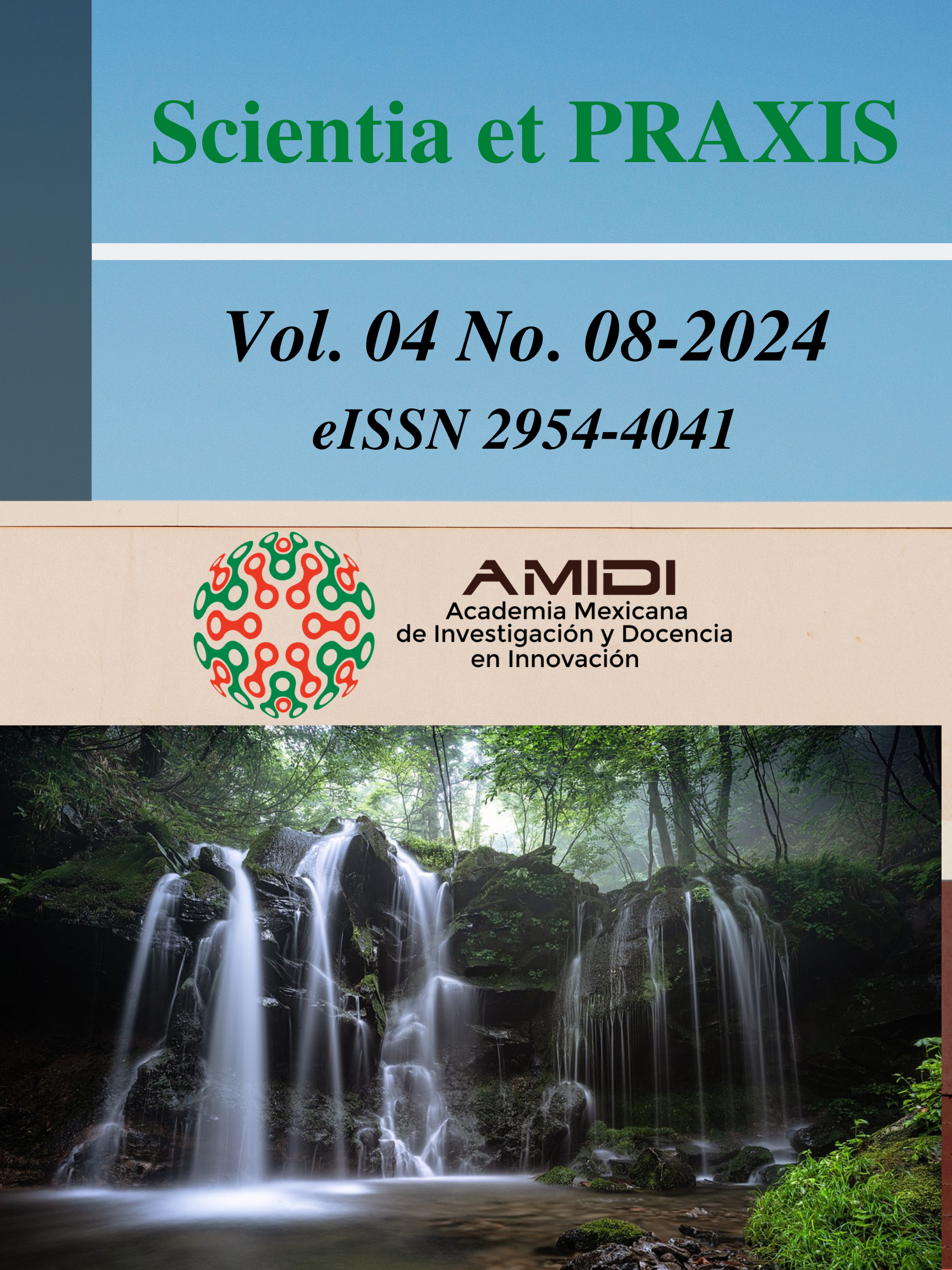The Mediation of Drivers and Practices to Overcome Barriers to the Circular Economy
DOI:
https://doi.org/10.55965/setp.4.08.a2Keywords:
circular economy capabilities, circular design, SMEs, mediator, PLS-SEMAbstract
Context. This study focuses on the manufacturing industry in Coahuila, particularly micro and small businesses known for their labor intensity and minimal input use. These businesses have significant potential to integrate into the circular economy by reducing natural resource and energy consumption through open innovation.
Problem. The main challenge in adopting a circular economy is overcoming barriers to shifting from a linear model. This research aims to identify the drivers and practices that facilitate this transition. Specifically, it investigates how these drivers and practices enable SMEs to develop circular economy capabilities and overcome existing barriers.
Purpose. The study's objective is to explore and implement the drivers and practices that address circular economy barriers and contribute to achieving the Sustainable Development Goals within an open innovation framework and using a multidisciplinary approach.
Methodology. Initially, qualitative research involving entrepreneurs, academics, and researchers identified barriers and drivers. This was followed by quantitative research, including a survey conducted in April and May 2023 with 124 responses. Nine out of ten hypotheses were supported, and SMART PLS was used for hypothesis testing, managing multiple statistical criteria.
Theoretical and Practical Findings. The study's primary finding was the role of innovative actions in mediation theory. Practically, it validated the relationships between barriers and the capabilities of the circular economy concept.
Originality from a multidisciplinary and sustainable innovation point of view. This research innovatively and multidisciplinary addressed circular economy challenges within the framework of sustainable development goals.
Conclusions and limitations. The hypotheses and predictive values validated the innovative impact of mediating drivers and practices on circular economy capabilities. Limitations included potential biases in sample selection.
Downloads
References
Maldonado, G., Juárez, R. y Molina, V, (2024) ¿Las prácticas Lean son la solución para mejorar el
rendimiento empresarial en la industria manufacturera de México? Multidiscip. Bus. Rev. 17 (1), 33-48, https://doi.org/10.35692/07183992.17.1.4 DOI: https://doi.org/10.35692/07183992.17.1.4
McDonough, W. y Braungart, M. (2010). Cradle to cradle: Remaking the way we make things.
North point press.
https://books.google.com.mx/books/about/Cradle_to_Cradle.html?id=KFX5RprPGQ0C&redir_esc=y
Mejía-Mancilla, J. y Mejía-Trejo, J. (2024). Technology Acceptance Model for Smartphone Use in
Higher Education. Scientia et PRAXIS, 4(07), 113–158. https://doi.org/10.55965/setp.4.07.a5 DOI: https://doi.org/10.55965/setp.4.07.a5
Mhatre, P., Gedam, V. V., Unnikrishnan, S. y Raut, R. D. (2023). Circular economy adoption
barriers in built environment-a case of emerging economy. Journal of Cleaner Production, 392,
-201. https://doi.org/10.1016/j.jclepro.2023.136201 DOI: https://doi.org/10.1016/j.jclepro.2023.136201
Mont, O., Plepys, A., Whalen, K., y Nußholz, JLK. (2017). Business model
innovation for a Circular Economy: Drivers and barriers for the Swedish industry–the voice of REES companies. Suecia: Mistra REES, 19. https://lup.lub.lu.se/record/833402ef-b4d4-4541-a10e-34d1e89d2146
Munaro, M. R. y Tavares, S. F. (2023). A review on barriers, drivers, and stakeholders towards the
circular economy: The construction sector perspective. Cleaner and Responsible Consumption, 8, 100-107. https://doi.org/10.1016/j.clrc.2023.100107 DOI: https://doi.org/10.1016/j.clrc.2023.100107
Munoz-Melendez, G. (2023). Status of the Adoption and Practice of Circular Economy in Mexico. In: Ghosh, S.K., Ghosh, S.K. (eds) Circular Economy Adoption . Springer, Singapore. https://doi.org/10.1007/978-981-99-4803-1_8 DOI: https://doi.org/10.1007/978-981-99-4803-1_8
Naruetharadhol, P., Srisathan, W. A., Gebsombut, N., Wongthahan, P. y Ketkaew, C. (2022).
Industry 4.0 for Thai SMEs: Implementing open innovation as innovation capability management. International Journal of Technology, 13(1), 48-57. https://doi.org/10.14716/ijtech.v13i1.4746 DOI: https://doi.org/10.14716/ijtech.v13i1.4746
Nitzl, Ch.; Roldan, J. y Cepeda, G. (2016). Mediation analysis in partial least squares
path modeling: helping researchers discuss more sophisticated models. Industrial Management y Data Systems, 116, 9.
http://dx.doi.org/10.1108/IMDS-07-2015-0302 DOI: https://doi.org/10.1108/IMDS-07-2015-0302
Nurjanah, A. y Ardyan, E. (2022). Open innovation strategies and SMEs’ performance: the
mediating role of eco-innovation in environmental uncertainty. Management Systems in Production Engineering, 30(3), 214-222.
https://doi.org/10.2478/mspe-2022-0027 DOI: https://doi.org/10.2478/mspe-2022-0027
Organización de las Naciones Unidas (ONU, 2021). Consultado el 3-Mar-2024, de:
https://es.wiktionary.org/wiki/removido
Pheifer, A. G. (2017). Barriers y enablers to circular business models. Recuperado de:
www.circulairondernemen.nl/uploads/4f4995c266e00bee8f
Pinzón-Castro, S. Y. y Maldonado-Guzmán, G. (2023). Open Innovation Effects in Eco-
innovation and Business Performance in Mexican Manufacturing Firms. Scientia Et PRAXIS, 3(06), 1–19. https://doi.org/10.55965/setp.3.06.al
Programa de las Naciones Unidas para el Desarrollo (PNUD, 2024). Consultado el 2-Mar-2024,
Published
How to Cite
Issue
Section
License
Copyright (c) 2024 Víctor Manuel Molina-Morejón, Gonzalo Maldonado-Guzmán, Laura Fernández-Contreras.

This work is licensed under a Creative Commons Attribution-NonCommercial 4.0 International License.











